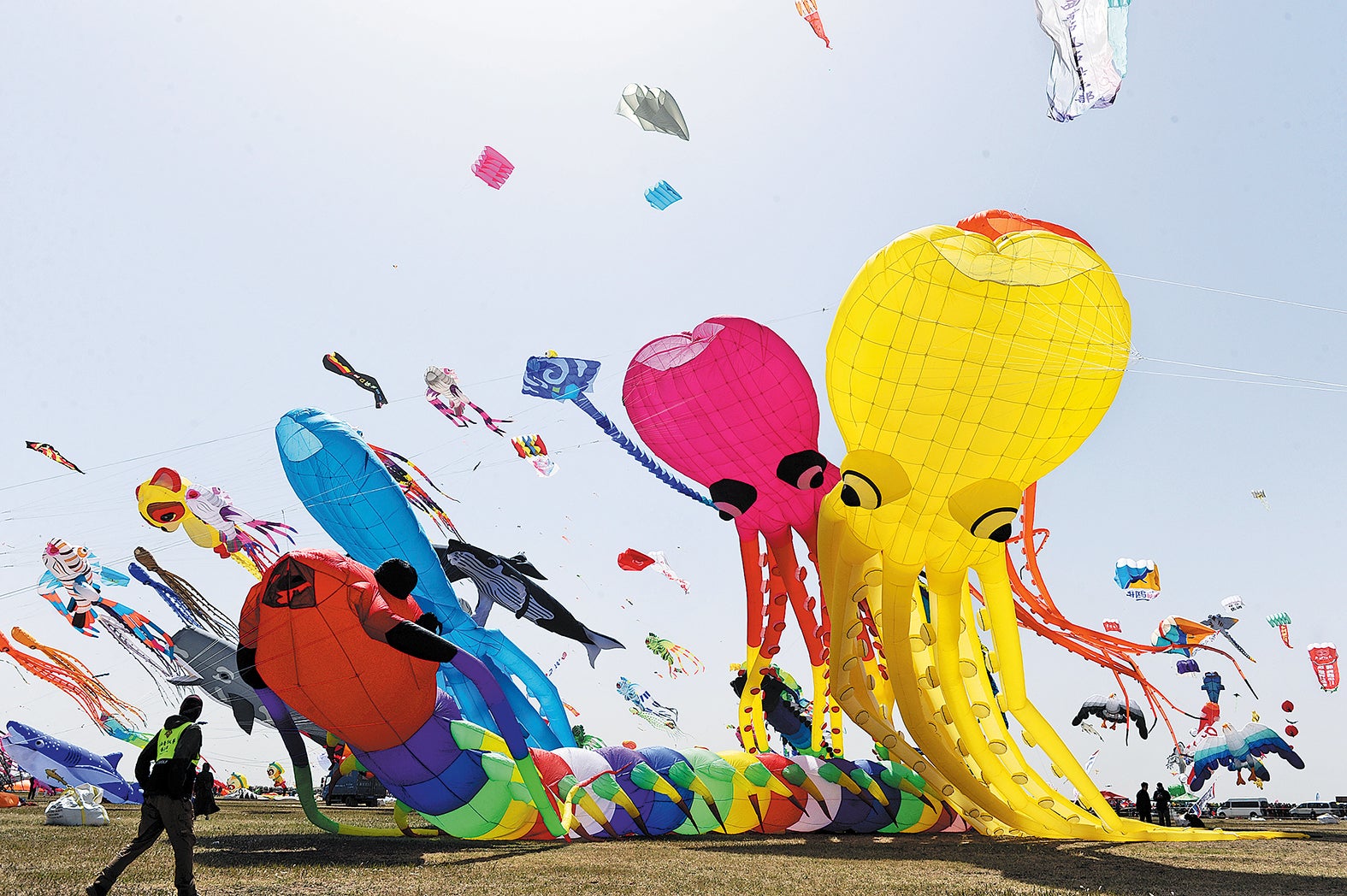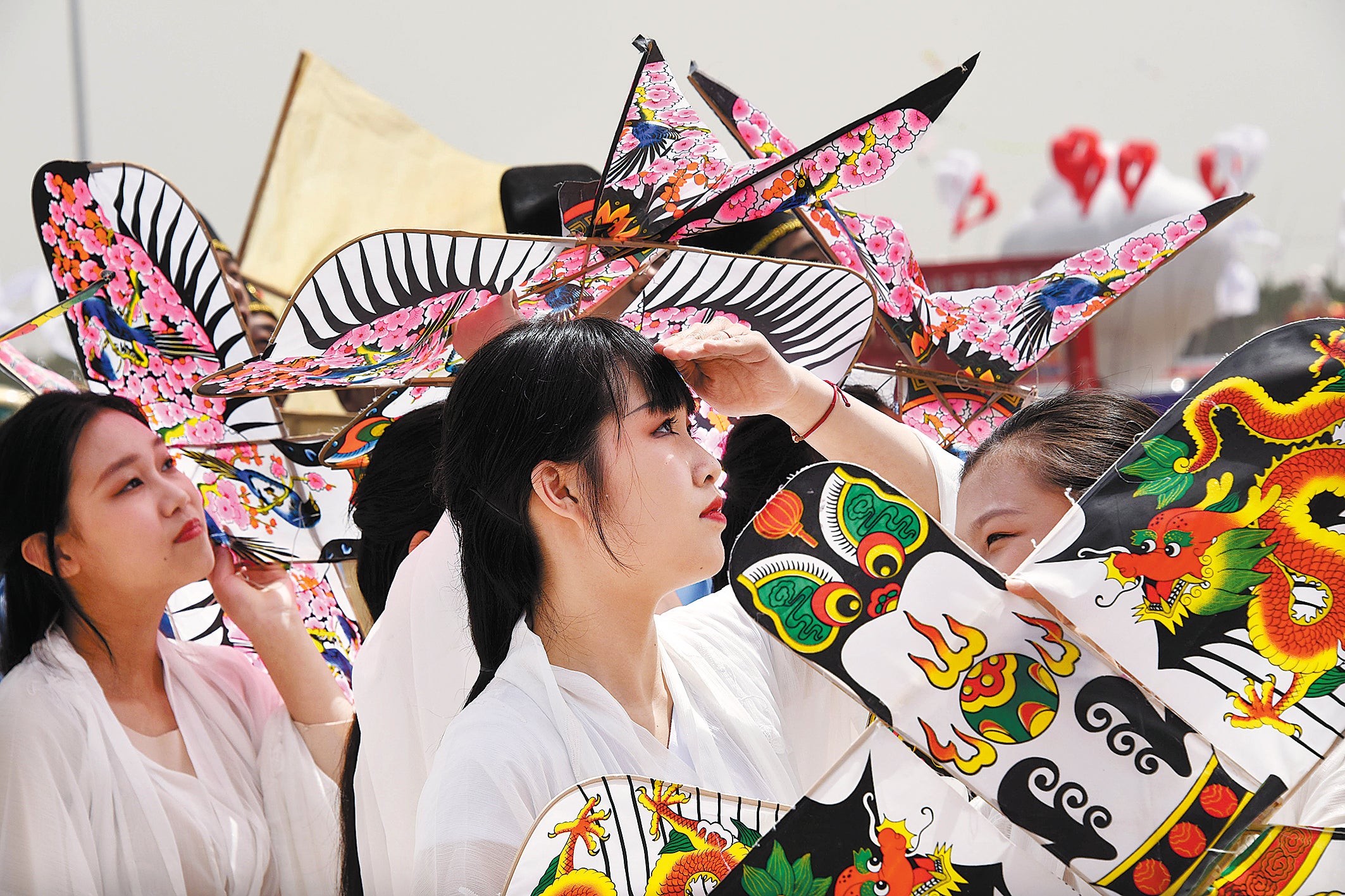Kites rise to festive occasion
THE ARTICLES ON THESE PAGES ARE PRODUCED BY CHINA DAILY, WHICH TAKES SOLE RESPONSIBILITY FOR THE CONTENTS

As spring winds blew, a huge crowd gathered in a field in Weifang, Shandong province, looking up at the sky in excitement.
Overhead, a sea of colourful kites in a multitude of sizes danced – their designs featuring high-speed trains, dragons, whales, peonies and cartoon characters, among others.
The 40th Weifang International Kite Festival attracted more than 150 teams from 59 countries and regions, who sent their kites skyward for the opening ceremony on April 15, 2023. The festival lasts for about a month.
Wang Yongxun, an experienced kite maker in Weifang, attended the festival with kites designed as different types of vegetables, including Chinese cabbages, carrots and green radishes.
“Weifang is known nationwide for its vegetables, so we designed vegetable kites to salute our hometown,” said Wang.
In the festival’s innovative section, Zhang Huagang and more than 20 fellow team members flew a 492ft-long kite designed as a high-speed train. Comprising a locomotive and 50 carriages, the kite took the team about three months to complete.
Wind on the opening day was perfect for Andreas Agren, who comes from Sweden, and brought a light-wind kite designed like a Viking ship to the festival.
“In Sweden, more than 1,000 years ago, merchants and warriors built ships to sail to other countries – sometimes for trading and sometimes for war. I made this kite to connect with my homeland,” he said.
A total of 14 kites featuring a ballet design also attracted considerable attention.
Each kite, which is 6.6ft long and just under 3.3ft wide, is controlled by four strings. Flown by 14 people, the kites were deftly controlled as the well-coordinated team members changed step, tugging at the strings to form different patterns in the air.
Team member Bai Xuedong said: “On average, it takes a year to master the basic skills needed to fly the kites in a choreographed way that ensures the strings don’t become tangled.
“Flying kites is a good way to stay in shape. If the weather permits, the team, which comprises retirees, practises for several hours a day.”
Statistics from the organising committee showed that the festival attracted more than 100,000 people on the opening day.
Sobraj Al Akand, who comes from Bangladesh, said: “We saw traditional kites, such as those designed like a dragon to represent China, and some really high-tech designs. Companies are also using kites to advertise themselves, which is a really nice concept.”

Kites have been flown in Weifang, widely known as the world’s kite capital, for about 2,400 years.
Legend has it that ancient Chinese philosopher Mozi, who was also known for his craftsmanship, made the first kite in what is now present-day Weifang. He is said to have spent three years making a wooden kite, but on the first day it flew, it fell to the ground and broke.
An ancient book states that kites were invented by Lu Ban (507-440 BC), a renowned carpenter, craftsman and engineer.
Local historical records show that Weifang kites were popular during the Ming Dynasty (1368-1644) and were a major folk art in the Qing Dynasty (1644-1911), with many artists becoming widely known for their exquisite, high-flying creations.
The city’s kite-making industry really took off after reform and opening-up was launched in December 1978. In 1984, kites from Weifang were sent to Shanghai for an exhibition. They impressed officials from an international kite association, who suggested that a global platform for the arts should be established in Weifang. This led to the first Weifang International Kite Festival taking place that year.
Kite lovers from a total of 11 countries and regions, including the United States, Australia, the United Kingdom, the Netherlands, Canada, Japan, New Zealand and Singapore, took part in the event.
The festival, which has since been held annually, has become a brand for the city. Many local landmarks, including the railway station, the arts centre and street lamps, feature butterfly-shaped kite designs.
Thanks to the city’s long and illustrious history, Weifang kites were listed as a national intangible cultural heritage in 2006.

Bookmark popover
Removed from bookmarks